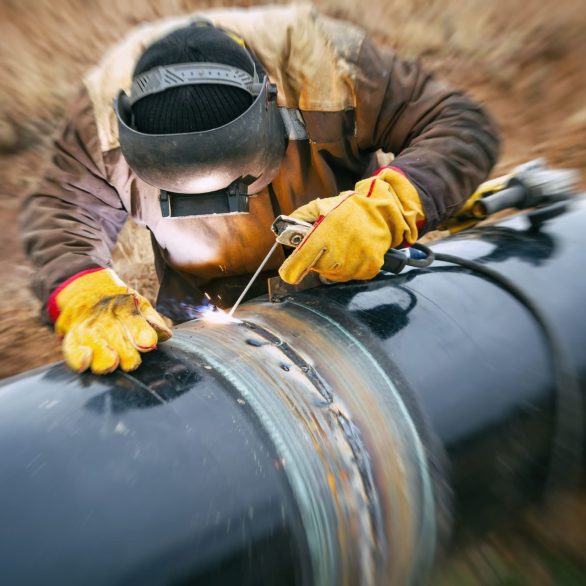
FEIS for Driftwood Line 200 and Line 300 Project CP21-465-000
The staff of the Federal Energy Regulatory Commission (FERC or Commission) has prepared a final environmental impact statement (EIS) for the Driftwood Line 200 and Line 300 Project (Project).
Driftwood Pipeline, LLC (Driftwood) proposes to construct and operate dual 42-inch-diameter natural gas pipelines originating near the town of Ragley in Beauregard Parish, Louisiana southward to a proposed receiver facility near the town of Carlyss in Calcasieu Parish, Louisiana. Construction and operation of the proposed facilities would provide a maximum of 5.7 billion standard cubic feet of natural gas per day to the Lake Charles market area.
The Project would include the following natural gas facilities:
- approximately 36.9 miles of 42-inch-diameter pipeline in Beauregard and Calcasieu Parishes, Louisiana (Line 200);
- approximately 32.4 miles of 42-inch-diameter pipeline in Beauregard and Calcasieu Parishes, Louisiana (Line 300) that would be constructed adjacent to Line 200 in a second phase of construction;
- new compressor station at MP 4.5 identified as the Indian Bayou Compressor Station with a total 211,200 horsepower (hp) in Beauregard Parish, Louisiana;
- approximately 0.9 mile of 30-inch-diameter lateral (Sempra Lateral) extending from Line 300 Meter Station 14 (milepost [MP] 4.0) to the Indian Bayou Compressor Station (MP 4.5);
- approximately 0.8 mile of 30-inch-diameter lateral (Transco Lateral) from Line 300 extending from Meter Station 5 (MP 5.2) to the Indian Bayou Compressor Station (MP 4.5);
- approximately 850 feet of dual 42-inch-diameter pipelines connecting the receiver facility (MP 36.9) to Meter Station 12 (MP 36.9);
- new receiver facility at the terminus of the Line 200 and Line 300 (MP 36.9) in Calcasieu Parish, Louisiana;
- 11 new meter stations and interconnects in Beauregard and Calcasieu Parishes, Louisiana;
- 6 mainline valves (MLV) within 3 valve facilities; and
- additional ancillary facilities such as communication facilities and internal inspection devices (i.e., pig launchers and receivers).
The EIS was prepared in compliance with the requirements of the National Environmental Policy Act (NEPA), the Council on Environmental Quality regulations for implementing NEPA (40 Code of Federal Regulations [CFR], 1502.13), and the FERC regulations implementing NEPA (18 CFR 380). The U.S. Environmental Protection Agency participated as a cooperating agency in the development of the EIS.
FERC staff concludes that construction and operation of the Project would result in some adverse environmental impacts. Most of these impacts would be temporary and occur during construction (e.g., impacts on land use, traffic, and noise). With the exception of climate change impacts, that are not characterized in the EIS as significant or insignificant, staff conclude that Project effects would not be significant. As part of the analysis, Commission staff developed specific mitigation measures (included in the Final EIS as recommendations). Staff recommend that these mitigation measures be attached as conditions to any authorization issued by the Commission.
The Commission will take into consideration staff’s recommendations when it makes a decision on the Project.
